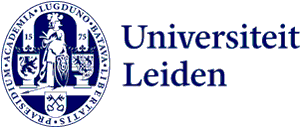
Why is that word there? Research on language structure completed
Communication is the transmission of information. All day long we are busy explaining and making things clear to each other, but exactly how we do that varies from language to language. Associate Professor Jenneke van der Wal delved into African Bantu languages for a Vidi project.
When you talk, you are constantly estimating how to convey information most efficiently. What does your interlocutor already know? What is new? And what do you want to emphasize as a speaker? The language you speak plays a big role in this, Van der Wal knows. ‘In Dutch, you can use intonation to indicate what is extra important. For example, you say, "I drink TEA" (and not coffee). In the Bantu languages this is much more ingrained in the grammar. In Kirundi, for example, you have special verb conjugations to indicate whether the most important information is still to follow or has already been mentioned.'
Bantu languages are spoken in the area stretching roughly from Cameroon to Kenya and South Africa. They are of interest to linguists because they differ greatly from European languages. 'Many of our current theories are based on a Eurocentric view,' Van der Wal explains. 'For example, we often assumed that word order is determined by the grammatical function of a word group. Is it a subject? Then the word gets a different place in the sentence than if it is an object. You can see from the languages in our project that it can be done differently. There, the position of a word is not determined by grammar, but by the information structure of the sentence. The question of whether the information is old or new is then decisive for the place in the sentence.
'Discovering the blueprint of language'
These major differences between European languages on the one hand and Bantu languages on the other complicate a goal of many linguists: figuring out what system underlies languages and thus our ability to acquire language. But that is precisely why Bantu languages are interesting to study, Van der Wal argues: ‘You can't discover that blueprint of our language ability if you only look at a particular set of languages. Understudied languages like those from the Bantu group can teach us a lot about our language ability.’
Combining perspectives
She received a Vidi grant five years ago to pursue that idea and set up a network of linguists among other things. Some of them spoke the language they were studying and lived in Africa, others studied it from the Netherlands. 'If you combine the perspective of the researcher from outside with the perspective of the researcher who also speaks the language and knows his way around it completely, you can achieve more together than you can on your own.'
Unfortunately, the approach was hampered by corona. 'We couldn’t go on fieldwork as a result,' Van der Wal recalls. 'That was especially difficult for the PhD candidates, who had just collected their first data. They couldn't go to Africa a second time as planned to collect the necessary remaining data, but were already too far along to do anything else entirely. Still, I think we got through it pretty well. I may have been able to go into a little less theory, but we learned so much about how Bantu languages use the information structure. This month we are publishing a paper showing that word order really works differently than was assumed, and we have developed a database for nine languages that will allow us to do further research in the coming years.'
Dedicated team
Asked what Van der Wal is most proud of, she falls silent for a moment. 'I still think of the people in the project, their dedication and how much we learned. At our final conference, two of our doctoral students presented their research. When I saw how they did it, how well they had mastered the research ... that briefly took my breath away.’
